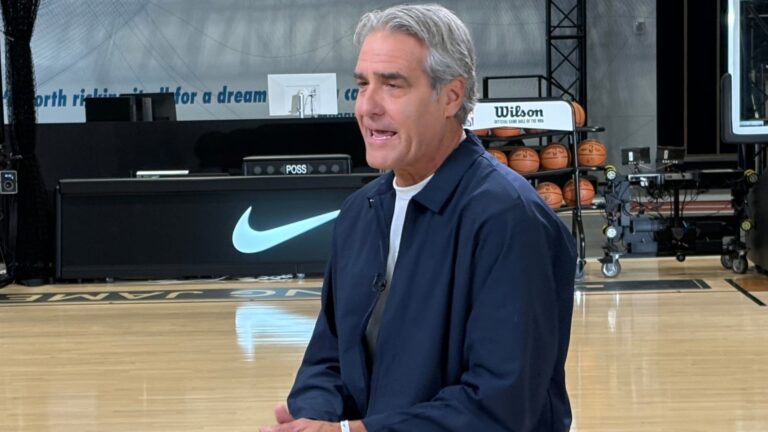Nike is in the midst of a comeback attempt. The world’s largest sportswear brand is still trading at less than half of its pandemic-era market valuation, and last year the stock suffered its worst trading day in history — wiping out $28 billion in value in a single session.
Now, nearly a year into his tenure, CEO Elliott Hill says the company is finding its footing. In an exclusive interview at Nike’s Beaverton, Oregon, headquarters, Hill outlined a strategy that hinges on innovation, sport, and rebuilding trust with consumers after years of slowing growth and mounting competition.
“My first day on the job, my slide said two things: we’re a sport company, and we’re a growth company,” Hill told CNBC. “When we grow sport, we grow the overall marketplace. And when that happens, I like our chances of growing.”
Hill, a three-decade Nike veteran who returned from retirement last year, has reorganized the company around individual sports rather than around product categories such as men’s, women’s and kids’. The goal, he says, is to “bring back the sharpness of sport” and to compete head-to-head with fast-rising challengers like On Running and Hoka.
Analysts say Nike’s lack of product innovation and absence from wholesalers in recent years allowed those upstart rivals to gain market share.
“That was a mistake,” said Stacey Widlitz, president of SW Retail Advisors. “When you pull back from that channel and withhold some of your best and newest product, someone else comes in and fills those shelves.”
Under former CEO John Donahoe, the retailer began prioritizing direct-to-consumer sales over its partnerships with wholesalers like Foot Locker and Dick’s Sporting Goods. The plan initially saw increased direct sales, but as Covid lockdowns largely lifted in 2021, Nike’s revenue from direct channels began stalling.
Hill acknowledged the competition is fierce: “We opened shelf space, and now we’re having to earn it back. But our teams are excited to pivot to a new offense.”
Hill didn’t offer specifics around future innovations or product announcements.
The company also faces challenges in clearing excess inventory and offsetting $1.5 billion in tariff-related costs. Watch the above video to learn more about Nike’s comeback strategy.
Read More: We have to earn shelf space back amid competition



